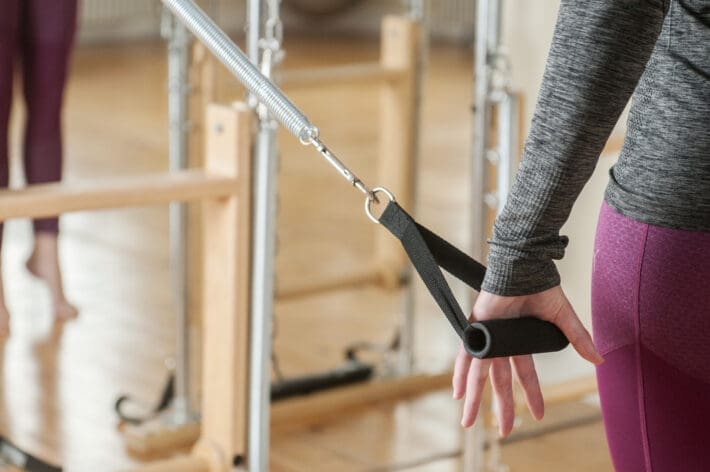Starting Your Pilates Dream

Have you ever dreamed of opening your own Pilates studio? Whether you’re a passionate instructor or simply love the lifestyle, running a Pilates business can be both rewarding and empowering. But let’s be real—it’s not just about having a passion for fitness. You need a solid plan, smart tools, and a clear vision to make your studio a success. In this guide, we’ll walk you through the essential steps to start and grow your own Pilates studio. From business planning to choosing the right Pilates scheduling software, we’ve got you covered.
Step 1: Define Your Pilates Studio Vision
Before you dive into logistics, take a moment to ask yourself some big-picture questions:
- What type of Pilates studio do you want to open—mat-based, reformer, or a mix of both?
- Do you want a cozy boutique space or a larger facility with multiple classes running simultaneously?
- Who is your ideal client? Busy professionals, new moms, seniors, athletes?
Knowing your vision and your audience helps shape everything from your branding to your class schedule. Be clear and confident in what you want to create, and don’t be afraid to make your studio unique.

Step 2: Build a Business Plan
Every successful business starts with a clear plan. A well-thought-out business plan helps you secure funding, organize your goals, and stay focused.
Here’s what your Pilates studio business plan should include:
- Executive summary: A short overview of your studio’s goals.
- Market research: Information about Pilates demand in your area, your competitors, and your target audience.
- Services offered: Types of classes, private sessions, workshops, etc.
- Marketing plan: How you’ll attract and retain clients.
- Financial projections: Start-up costs, projected income, expenses, and breakeven analysis.
This document will be your roadmap—revisit it often and update it as your business grows.
Step 3: Choose the Right Location
The right location can make or break a new studio. When scouting a space, consider:
- Foot traffic and visibility
- Parking availability
- Nearby businesses that might bring in potential clients (like coffee shops or wellness centers)
- Rent and overhead costs
Also, make sure the space can support the equipment you need and meets zoning and safety regulations. Think about the atmosphere, too—a Pilates studio should feel clean, calming, and inviting.
Step 4: Design a Space Clients Love
Pilates is all about focus, form, and flow. Your studio should reflect that. Invest in good lighting, mirrors, flooring, and ventilation. Think minimalist, not sterile. A welcoming reception area, tidy storage for props, and cozy changing areas can go a long way in creating a positive experience.
Make sure your layout works for the number of clients you want to accommodate. Whether you’re offering group reformer classes or private mat sessions, a well-designed space allows for easy movement and comfort.
Step 5: Buy the Right Equipment
Depending on your studio’s focus, your equipment list might include:
- Reformers
- Cadillacs
- Wunda chairs
- Mats and props (resistance bands, Pilates rings, foam rollers)
Investing in quality equipment may be pricey up front, but it’s essential for safety and client satisfaction. Some suppliers offer leasing options, which can help manage initial costs.
Step 6: Navigate Legal and Insurance Requirements
You’ll need the proper licenses and permits to operate your Pilates studio. This may include:
- A business license
- Liability insurance
- Health and safety certifications
Also, check if your instructors are certified through a reputable Pilates training program. Make sure your policies protect your business, your staff, and your clients.
Step 7: Hire a Stellar Team
You don’t have to do it all alone. Hiring the right instructors and front-desk staff can make a huge difference. Look for team members who:
- Are certified and experienced
- Match your studio’s vibe and values
- Provide excellent customer service
- Are reliable and communicative
A great team creates a welcoming, professional atmosphere—and helps you grow your community.
Step 8: Set Up the Best Pilates Scheduling Software
One of the smartest things you can do from day one is invest in Pilates scheduling software. This tool makes it easy to:
- Schedule classes and instructors
- Let clients book (and cancel) online
- Send reminders and notifications
- Manage payments and memberships
- Track attendance and class performance
Running a studio manually can be overwhelming. With Pilates scheduling software, you save time and reduce stress, so you can focus on teaching and connecting with your clients.
Some platforms also integrate with marketing tools, social media, and even mobile apps—making your studio look professional and modern.
Step 9: Create a Winning Pricing Structure
Your pricing should reflect the value you offer while staying competitive. Consider offering:
- Drop-in class rates
- Class packs (e.g., 5 or 10 classes)
- Monthly or unlimited memberships
- Private session pricing
- Introductory offers for new clients
Test different pricing strategies and keep an eye on what works. You can use your Pilates scheduling software to track trends and see what keeps clients coming back.
Step 10: Market Your Studio Like a Pro
You don’t need a huge budget to promote your studio—you just need consistency and creativity. Here are a few smart strategies:
- Social media: Post class updates, instructor spotlights, testimonials, and educational content.
- Email marketing: Keep your clients in the loop about promotions, events, and news.
- Referral program: Encourage current clients to bring their friends and reward them for it.
- Local partnerships: Collaborate with nearby businesses like cafes, wellness centers, or athletic stores.
- Google Business Profile: Make sure people can find your studio when they search online.
Don’t forget to ask happy clients to leave reviews. Social proof goes a long way!
Step 11: Build a Strong Community
A Pilates studio is more than a place to work out—it’s a community. Create an inclusive and encouraging environment where people feel supported. Small gestures like remembering clients’ names, celebrating milestones, or hosting fun themed classes can foster loyalty and connection.
You can also offer events like wellness workshops, teacher training, or open house days to strengthen your community and draw in new clients.
Step 12: Track Progress and Keep Evolving
Once your studio is up and running, take time to regularly evaluate what’s working and what’s not. Use reports and insights from your Pilates scheduling software to monitor:
- Class attendance
- Instructor performance
- Membership trends
- Revenue streams
Stay open to feedback and be willing to adjust your offerings. The fitness industry is always changing, and staying flexible helps you stay relevant and successful.
Bonus Tip: Keep Learning and Stay Inspired
As a studio owner, investing in your personal growth is just as important as running your business. Attend industry workshops, follow the latest Pilates trends, and network with fellow studio owners. Staying informed and connected not only enhances your teaching but also keeps your passion alive. Continuous learning helps you adapt, improve your offerings, and lead your studio with confidence and inspiration in a constantly evolving fitness landscape.
Bring Your Pilates Vision to Life
Opening a Pilates studio is an exciting and fulfilling journey. While it takes hard work, thoughtful planning, and the right tools, it also gives you the chance to build something truly special. From defining your mission to choosing the best Pilates scheduling software, each step you take brings you closer to turning your vision into a vibrant, successful studio. Stay focused, stay flexible, and most importantly—enjoy the ride. Your dream studio is just around the corner.





